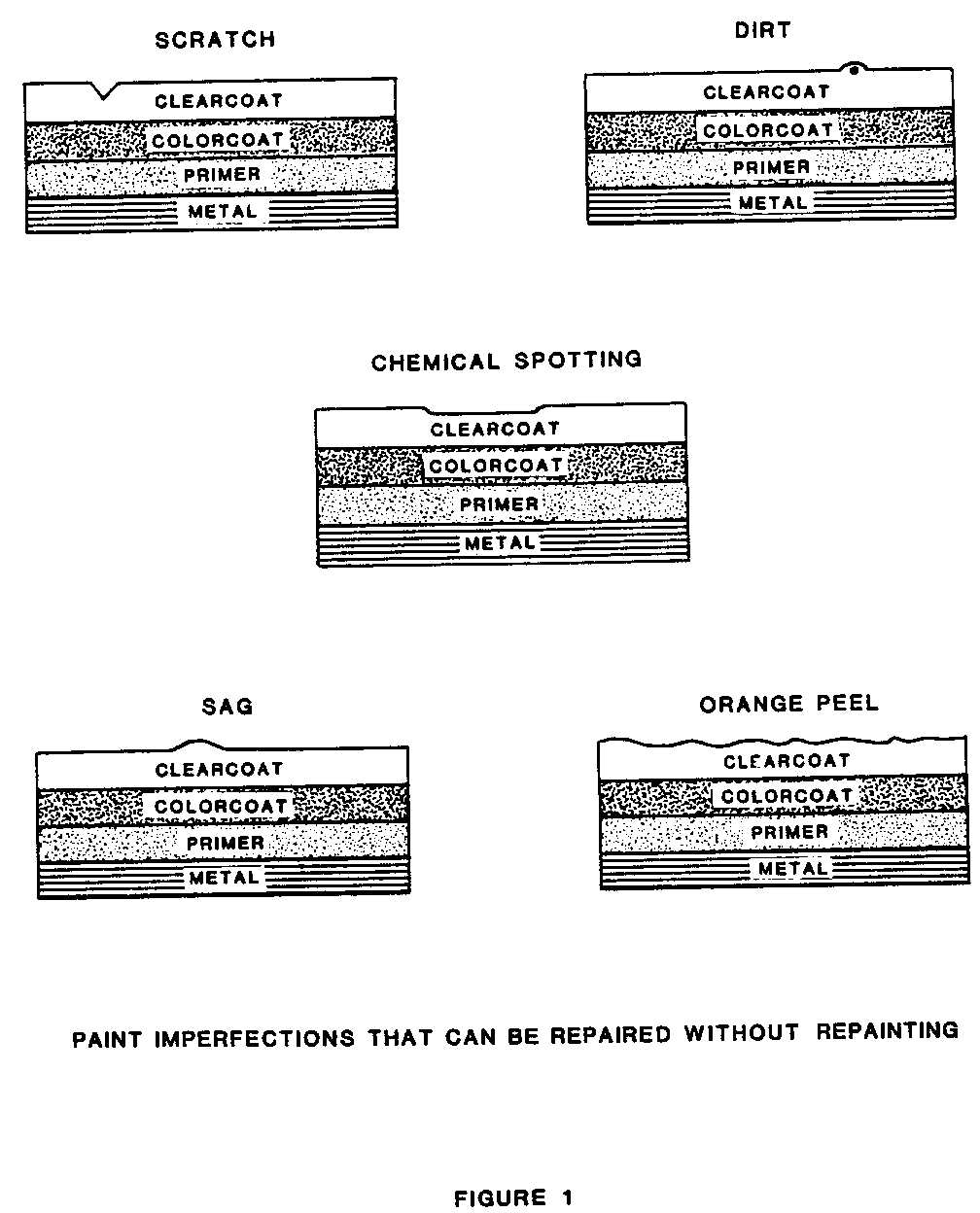PAINT REPAIR WITHOUT REPAINTING

Model and Year 1984-1985 CORVETTE AND 1985 ASTRO VAN
Many minor paint imperfections such as scratches, dirt, chemical spotting, sags and orange peel can be repaired without repainting (see Figure 1.) If an imperfection can be sanded out before reaching the colorcoat on vehicles having a clearcoat, there is no need to repaint.
The basic repair procedure involves sanding, compounding and polishing. The possibility of scratches in the finished repair can be avoided by sanding with a 1200 to 1500 micro fine paper such as 3M 02022, 02023 or equivalent and using a medium to fine compound.
Notice: European "P 1200" is much coarser and, therefore, not equivalent to US 1200.
In many instances repairs can be made by compounding and polishing, and should be attempted prior to any sanding.
Compounding and Polishing
1. Thoroughly wash repair area with a mild detergent.
2. Apply a small amount of medium to fine machine rubbing compound to repair area and smear evenly with compoundin& pad.
3. With polisher running at approximately 2700 RPM, compound repair area. Keep pad flat against panel while applying light pressure. Feature lines and panel edges should be hand rubbed to avoid burn-through. Check repair area frequently and, if necessary, add more compound
4. If sanding is required, proceed to step 6 if not, apply polish to repair area and evenly smear with polishing pad.
5. Keep pad flat to panel and allow weight of polisher to do the work.Use polish sparingly to achieve original shine. Machine or hand polish repair area first, then blend in with rest of panel.
Sanding
6. If repair is near adjacent panels, mask adjacent panel to protect against sand scratches.
7. Saturate a piece of micro fine sand paper in a container of water and attach to a sanding pad. The addition of a small amount of liquid detergent or alcohol to the water will improve wet-out and sanding performance.
8. Keep repair area wet while sanding. Sand lightly and evenly in one direction using straight strokes.
CAUTION:
Frequently wipe or squeegee repair to determine when defect has been removed. Sand only enough top coat to remove defect. Sanding beyond top coat requires repainting.
9. Using a clean cloth, wipe repair area clean of water and top coat residue.
10. Compound and polish as necessary. Often only hand compounding and polishing of a small repair area is all that is necessary to restore appearance.
When making repairs, the following materials or equivalent are recommended:
Color Sanding Paper 3M Wet or Dry #02022 1200 Micro Fine
Color Sanding Paper 3M Wet or Dry #02023 1500 Micro Fine
Sponge Pad 3M Imperial Wet or #05530 Dry Sponge Pad
Compound 3M Super Duty #05955 Liquid Compound
Polish 3M Final Glaze #05988
Buffing Pad 3M Superbuff Pad #05701
Polishing Pad 3M Super Buffing Pad #05705
NOTICE: 3M micro fine paper is currently in limited supply and may not be readily available until approximately April 1, 1985.

General Motors bulletins are intended for use by professional technicians, not a "do-it-yourselfer". They are written to inform those technicians of conditions that may occur on some vehicles, or to provide information that could assist in the proper service of a vehicle. Properly trained technicians have the equipment, tools, safety instructions and know-how to do a job properly and safely. If a condition is described, do not assume that the bulletin applies to your vehicle, or that your vehicle will have that condition. See a General Motors dealer servicing your brand of General Motors vehicle for information on whether your vehicle may benefit from the information.
